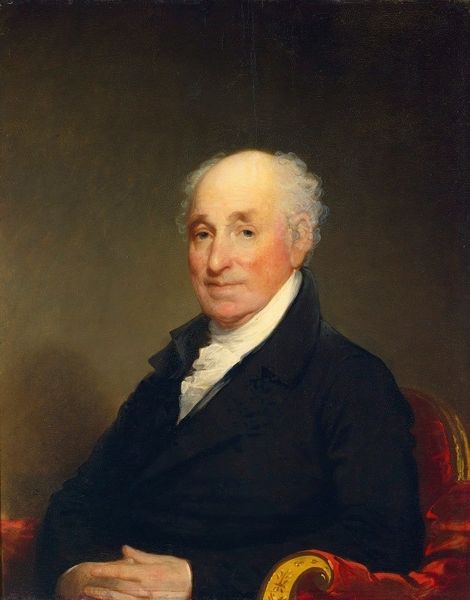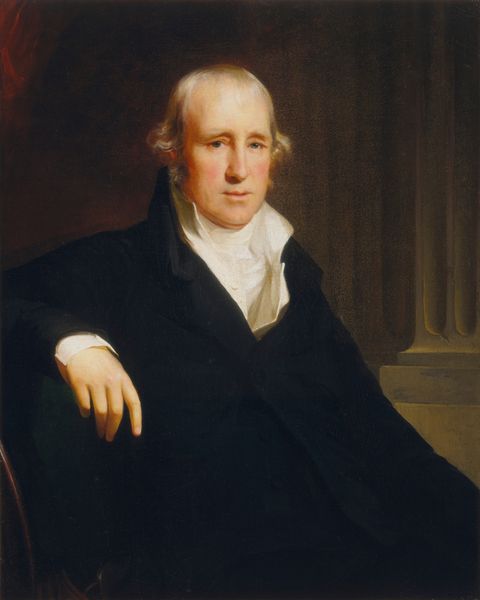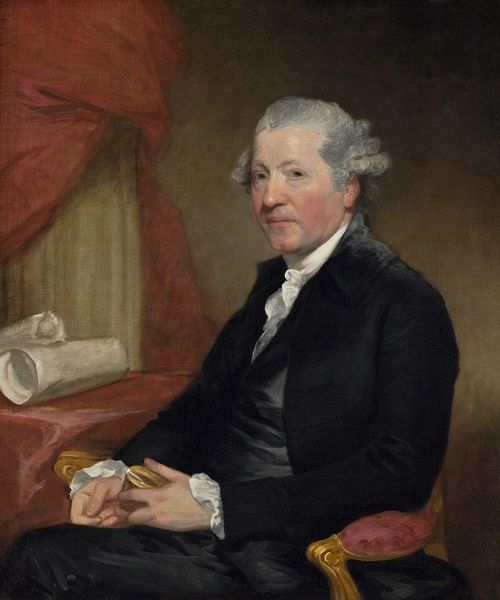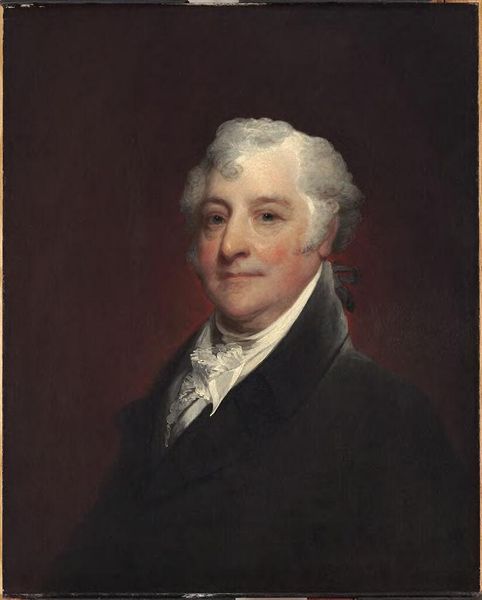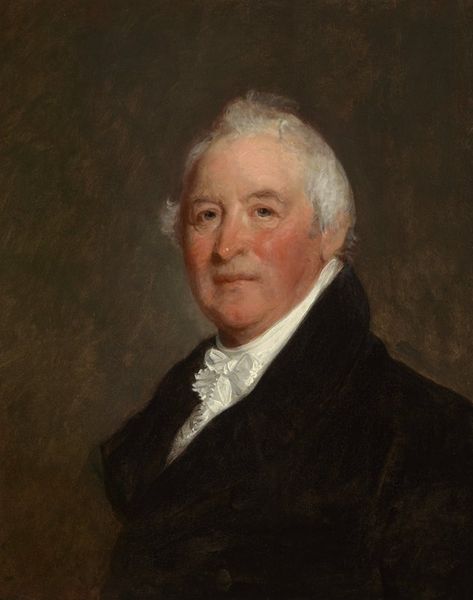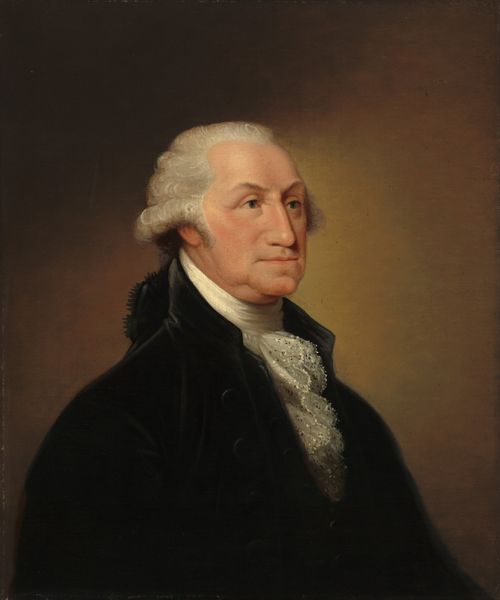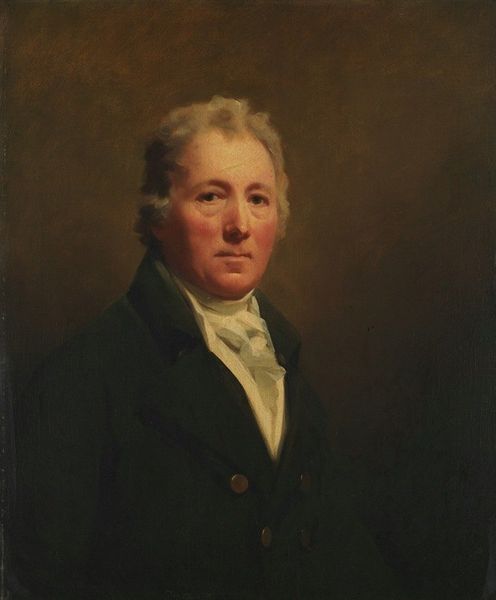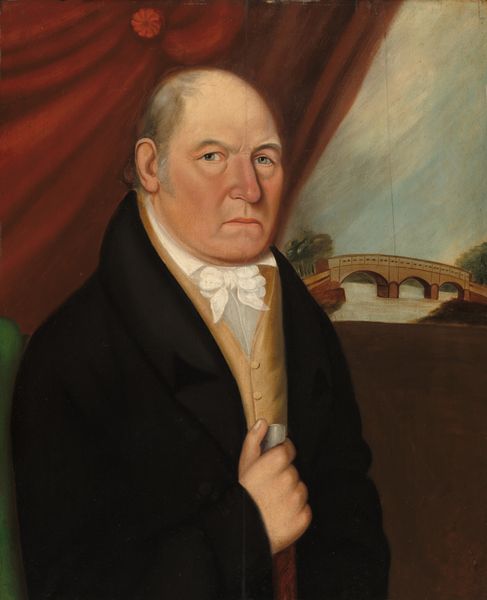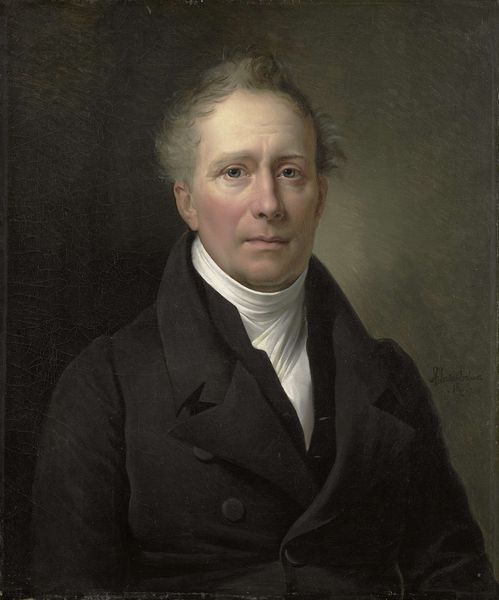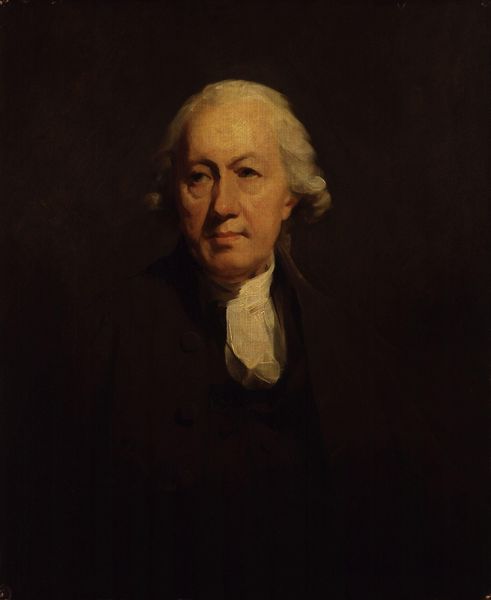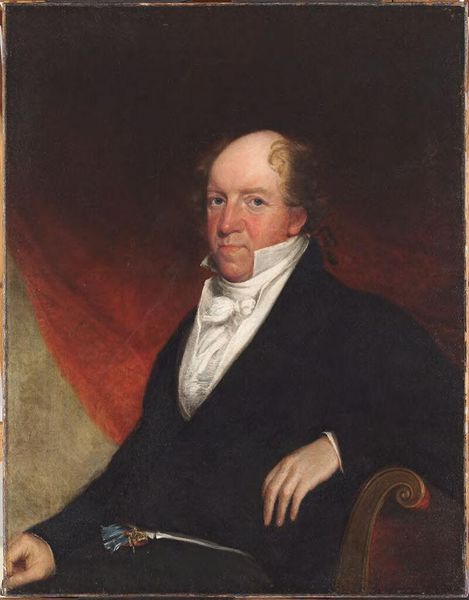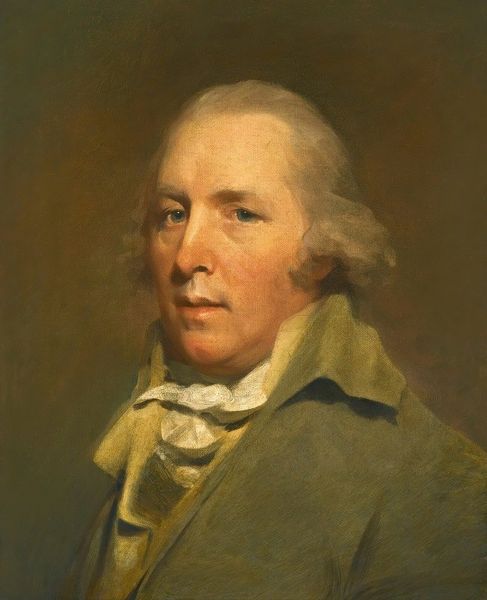
painting, oil-paint
#
portrait
#
neoclacissism
#
painting
#
oil-paint
#
history-painting
#
academic-art
Copyright: Public Domain: Artvee
Editor: This is Gilbert Stuart’s "Rufus King," painted around 1819-1820, and rendered in oil. There's a stillness and formality to this piece. What symbolic elements can you unpack from this artwork? Curator: Note how Stuart portrays King in the neoclassical style, a visual language prevalent during the founding of the United States. The somber palette, and King’s composed posture all speak to a particular moment. What do you think he's holding in his hands, and what might it represent? Editor: It looks like papers… legal documents, maybe? Is it about his political career? Curator: Precisely. Those papers act as a visual shorthand, connecting him to governance, to rhetoric, to the weight of legislation. It’s not merely a portrait, it’s a constructed representation, imbuing King with the gravity and purpose associated with his office. Stuart employs conventional symbols to anchor King within the cultural memory of the American Republic. Notice also the pose. Does it remind you of other images? Editor: Yes, his slightly averted gaze and seated position evoke similar portraits of nobility from Europe. Is that intentional? Curator: It absolutely is. These choices consciously linked American leaders to a lineage of authority. Now, does this strategy of borrowing historical visual cues resonate with you? Does it enhance the understanding or dilute the unique context of the new republic? Editor: I guess I see both sides. It adds weight to the subject, but maybe at the cost of originality. Thanks, it’s helped me think more deeply about how images can embody cultural values. Curator: My pleasure! This exercise is an excellent entry point into considering the choices made in portraiture and their subsequent lasting effect.
Comments
No comments
Be the first to comment and join the conversation on the ultimate creative platform.
